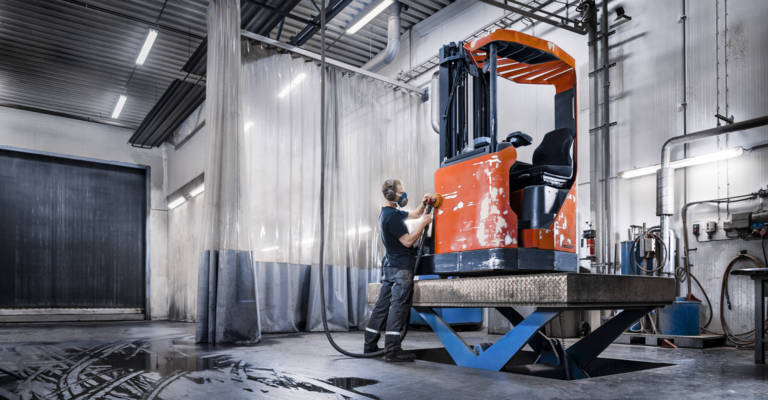We began our series on cost-saving for fleets with advice on battery management. In this post, we will explore ways in which you can control and reduce your damage costs.
Damage costs typically represent 5-15% of total truck operating costs. But it’s not only that: for every € of truck damage, you could add up to €10 in infrastructure/goods damages. That’s why reducing your damage costs goes a long way – and it’s why I_Site Explorer gives you ways to analyse your fleet and make smart improvements to prevent damage costs.
Impact management
Impacts, or improper use of forklifts, will result in additional service costs, as well as repairs to infrastructure, and goods and valuable uptime losses. But for the fleet manager, it can be challenging to uncover all the relevant information about forklift damage costs: where they come from, which operators were involved, what’s in the latest service reports…
That’s where I_Site Explorer comes in. It can help you track impacts thanks to sensors on the trucks. The impact reports show the magnitude of the impact and notify you about where the impact happened on the truck - on the front, back or side of the forklift. It also allows you to see where in your facility the impact occurred and who was involved, giving you a better insight into whether you need to redesign certain areas of your warehouse, or provide additional driver training. Combined with your forklift service history, I_Site gives you the ability to track the most common sources of damage to your machines, goods, racking and building.
These insights can really help you take the right action to avoid extra repairs, and create a safer and more cost-efficient operation.

Preventing damage is better than repairing it
I_Site Explorer incorporates a pre-operational check function, which prompts forklift operators to perform a customised safety check before starting up the truck. These checks will help prevent incidents and avoid extra maintenance costs. Simple questions such as “Are the forks in good condition?” and “Are the brakes working correctly?” will translate to results in terms of reliable operation.
Do you know who is operating the trucks?
The ability to monitor who is driving your trucks triggers improved driving behaviour, resulting not just in lower damage costs, but also a safer environment for operators. It’s possible to put measures in place to ensure only trained, approved drivers with valid licence have access to corresponding truck models – such as the creation of unique driver profiles with PIN codes, or utilising access cards that operators already use to enter the premises. Reducing unauthorised truck use will reduce damage costs.
It’s never a bad time to analyse what’s causing damage as this can quickly lead to a reduction in your overall running costs.



.jpg?width=191&name=TRG80_A002_SEnS+_detection%20(1).jpg)

